
One of my favorite artists is Van Gogh. I have his painting called “Café Terrace at Night” hanging in our kitchen.
Van Gogh is known for using vibrant colors in his creations. He would often paint an object using bright colors you would never see on the object in real life.
That’s probably a big reason why his works are so fascinating.
As we go into this second article on how to play a bass guitar, we will be dealing with two of the essential colors in music, without which it would be a drab world indeed. So…
… put on your axe and let’s get started!
Seeing is Believing
I always like to give you a video tutorial, as well as the more detailed text, to really allow you learn as if you’re in a lesson with me. Watch this short lesson on YouTube first, then come back here to explore all the particulars and increase your understanding:
Got the Foundation?
If you haven’t read yet my first article on how to play a bass guitar, you might need to. A lot of the things I will reference in today’s article I explained in part one.
Do you have the chromatic scale memorized?
Do you know what the open strings of your bass guitar are??
Do you know the exercises to practice that will quickly help you get around on your bass guitar neck??
Do you know how to play a root and a 5th anywhere on the neck, and know what those mean???
If you answered “no” to any of these questions, then go back and review my part one article RIGHT HERE.
Don’t worry. I’ll wait. lol
Okay – got everything in part one mastered?? Sweet. Now let’s add some color…
The Spinning Wheel
Playing the root, the 5th and the octave on a bass guitar is very common and very useful. There are some songs I’ve played that stay on the root, the 5th and the octave almost exclusively.
But if that’s all we ever play, there won’t be very much color at all in our expression. It’ll be very black and white, and after a while would get kind of boring.
Don’t get me wrong, those notes are fine for some things, but what about all the other glorious shades that are available to us in music? shall we just ignore them??
HECK…NO! Life’s too short to not use the whole color wheel.
So let’s start spinning it with two of the best colors of all…
Darkness & Light
There are two kinds of chords that are the most basic western music:
- The major chord
- The minor chord
It’ll make things a lot easier to remember by describing these two chords this way:
- The major chord sounds happy.
- The minor chord sound sad.
This is a simplification of all the depths that are plumbed in those two chords, but it will quickly help you differentiate between the two.
So just remember: happy and sad. Light and darkness. Sunrise and sunset. That’s major and minor.
Now let’s tackle how to play ’em!
Sunrise
First, we’ll bring the sun up playing the major chord outline.
Choose a root. Any root. I’ll choose 5th fret “A” to get us going.
On the bass guitar, if you go one fret over and one fret down from whatever root note you’re on, you will be playing the major third note.
You can throw this note in whenever you’re playing a chord that is only a letter, like A, or D, or G.
You can also use the major third note for chords designated by letters that are followed by either a flat or a sharp. Eb, for example, or C#.
All those types of chords are major chords. That means they use the major third. Therefore, you can toss it in whenever you want.
Do you have to play the major third when it’s a major chord?? Now, there’s no rule that says you must. But it does often helped establish the happy sound of a major chord.
Don’t forget to let your ol’ pals the 5th & the Octave have a little fun in your jam too. Toss them in like a good strong marinating sauce. They produce a STRONG flavor!
Alright, so let’s get to know it, shall we? Turn a metronome on, set it to 4/4, and create a Groove first using just your route 5th and octave.
Next, try occasionally the major third in somewhere. See how that sounds. It should have a pretty uplifting quality, since our ears are trained to recognize the major chord as bright and happy.
Got it? Cool. Now let’s meet its bummed out counterpart.
Be forewarned though: he’s a bit of a Donald Downer. 😮
Sunset
The minor chord sounds darker, sadder and, frankly, depressed. If you’ve ever had your emotions moved buy a truly sorrowful song, it was probably using minor chords.
There are two ways to play a minor chord outline. The first way is:
Start on any root with your first finger, then play the minor third THREE FRETS UP on the same string.
You then can play the fifth and octave with your ring finger.
The second way to play a minor chord outline is:
Play any root note with your second finger. Then go to the next string UP and go two frets down. That’s your minor third note. Play that with your first finger.
To add the 5th, stretch up four frets and play it with your pinky. The octave you’ll also play with your pinky, one string up from the 5th.
I tend to use the first method way more. Occasionally though, there will be a bass line where it makes more sense to use the second method.
Make yourself adept at both by practicing, and you’ll know which one to use at any given moment.
Now turn on your metronome again, and try coming up with bass lines that use a root, 5th, octave and minor third. Try incorporating both minor third fingerings.
Are you hearing the sad, dejected quality of the minor third as you play?? This color in music can really impact us… especially if we’ve had a bad day!
Adjusting Your Hair Trigger!
You should be able to change between a major chord outline and the minor chord outline at the drop of a pick.
Get that hair trigger honed by doing this with a metronome: play the major fingering for four counts; then the minor; then repeat back and forth.
To get yourself really adept, switch your metronome to 3/4 time, and come up with grooves that utilize both chord types.
If you do that, you’ll pretty much be ready for whatever a band might throw at you! Unless they wanna do Rush-type stuff and rock in 7/8, 9/4 and 5/8. Then you may have to practice… uh… a little more. lol
Making Your BIG Splash!!
As always, the best thing you can do to become a better player is play SONGS. Get yourself some song books. Or find your favorite songs chords using Google.
Doing this is like “splashing in the water” of music. It’s a great way to train your ear to hear the many colors, or emotions, that music can conjure up. And it’s more fun than a blue whale breaching in the mighty Pacific!
That’s all for today. Hope you enjoyed the video and the tutorial, and I hope you are as excited as I still am to play the bass.
It’s a fantastic instrument!!
Now, go… make… sounds!!
Teaj
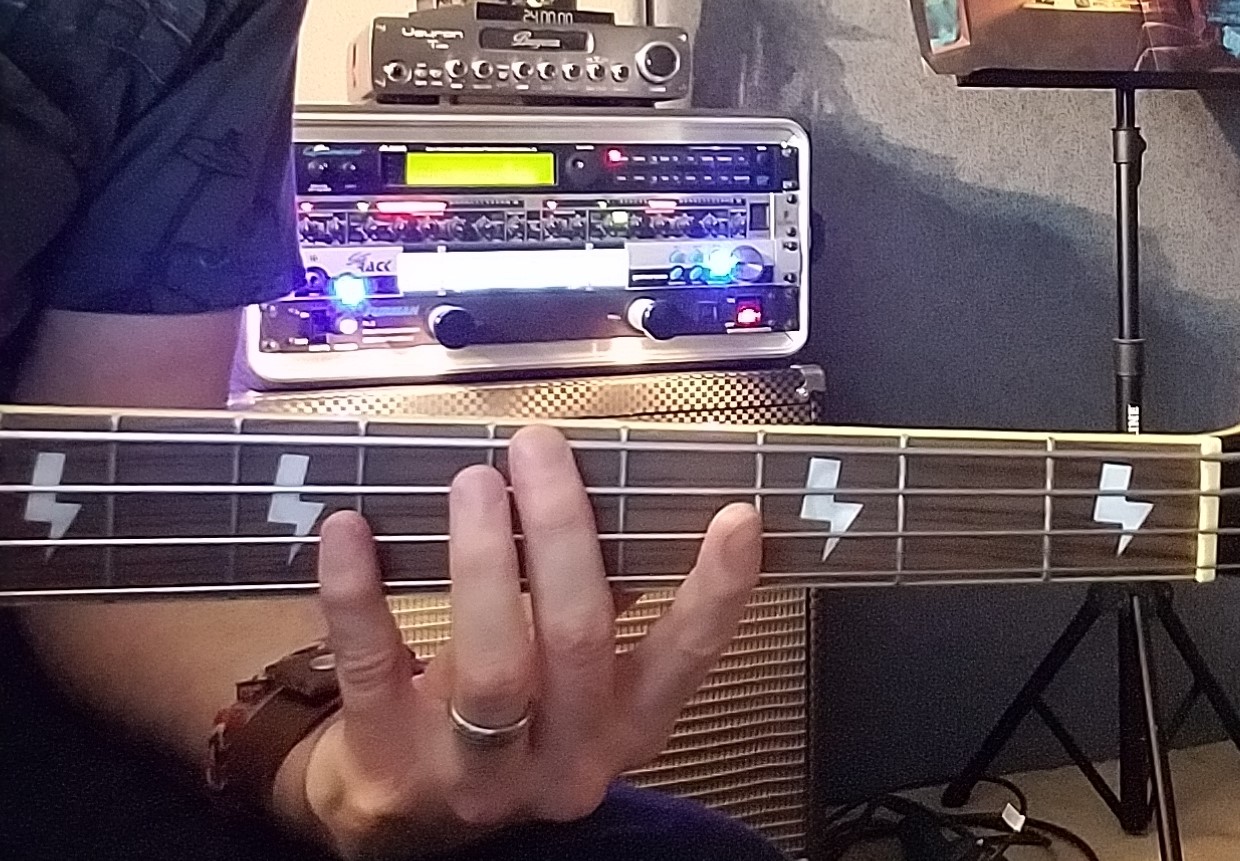
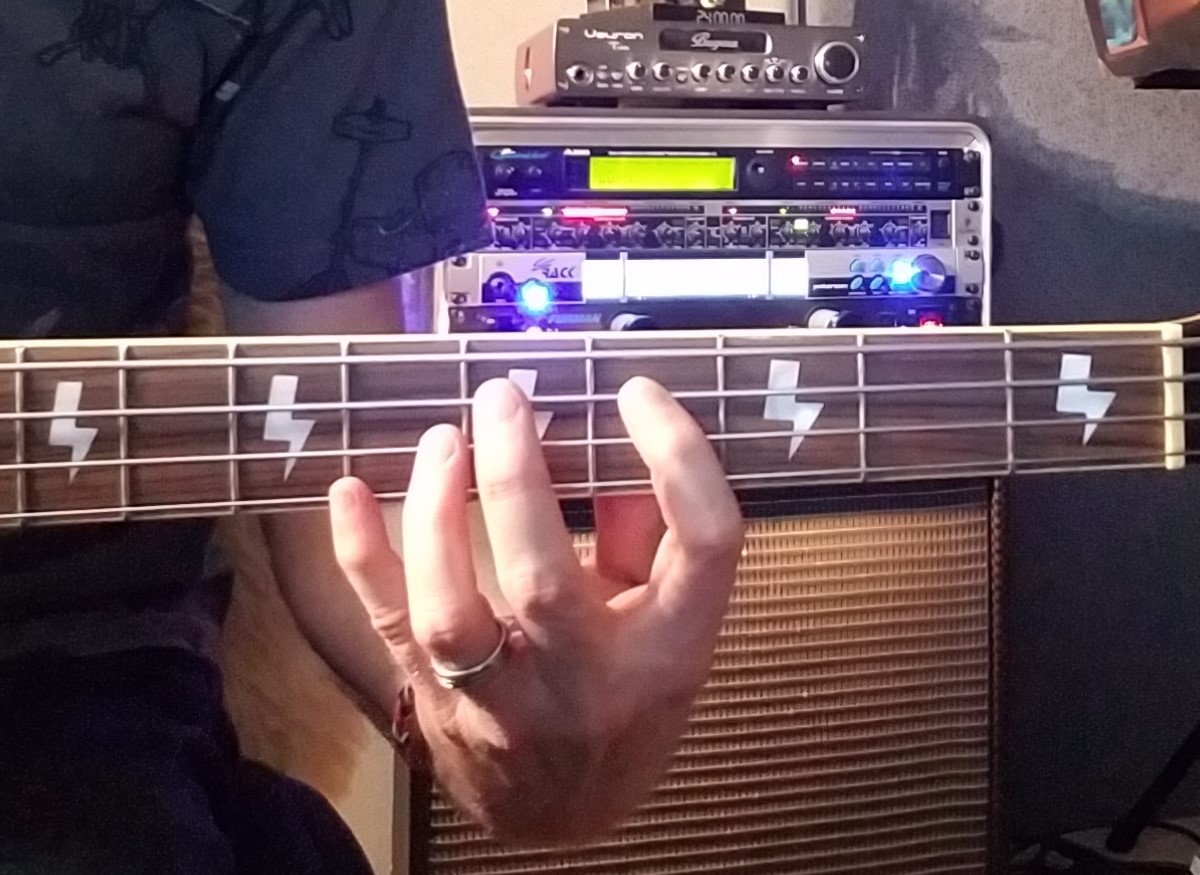

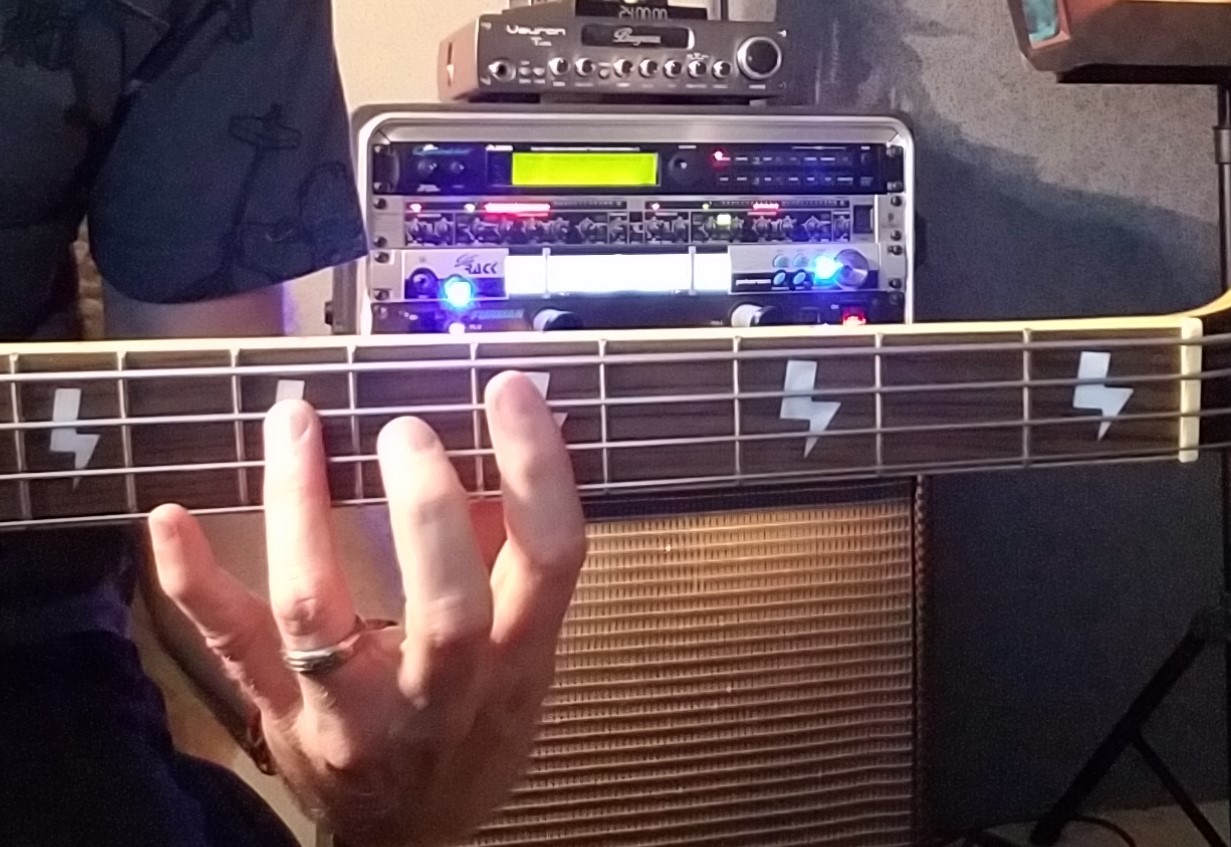
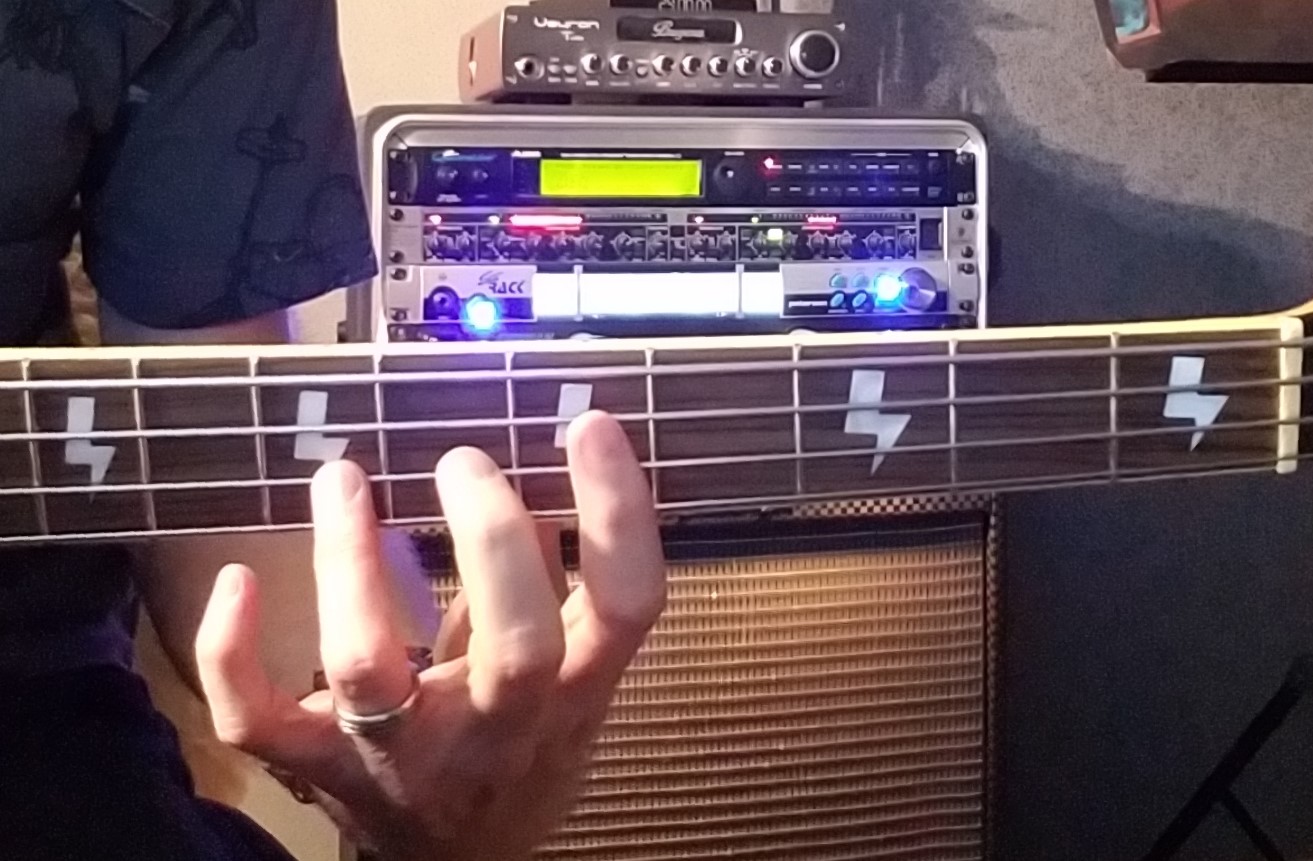
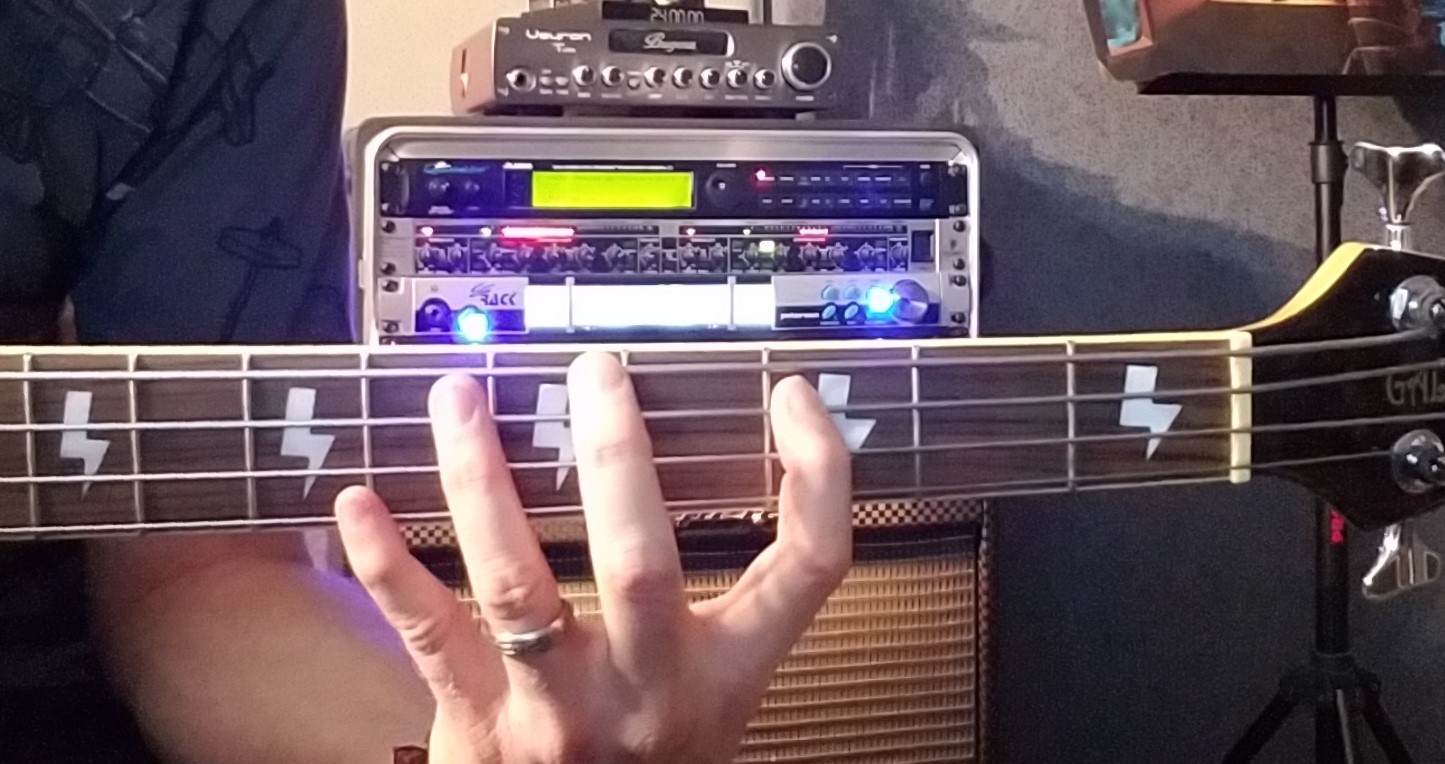
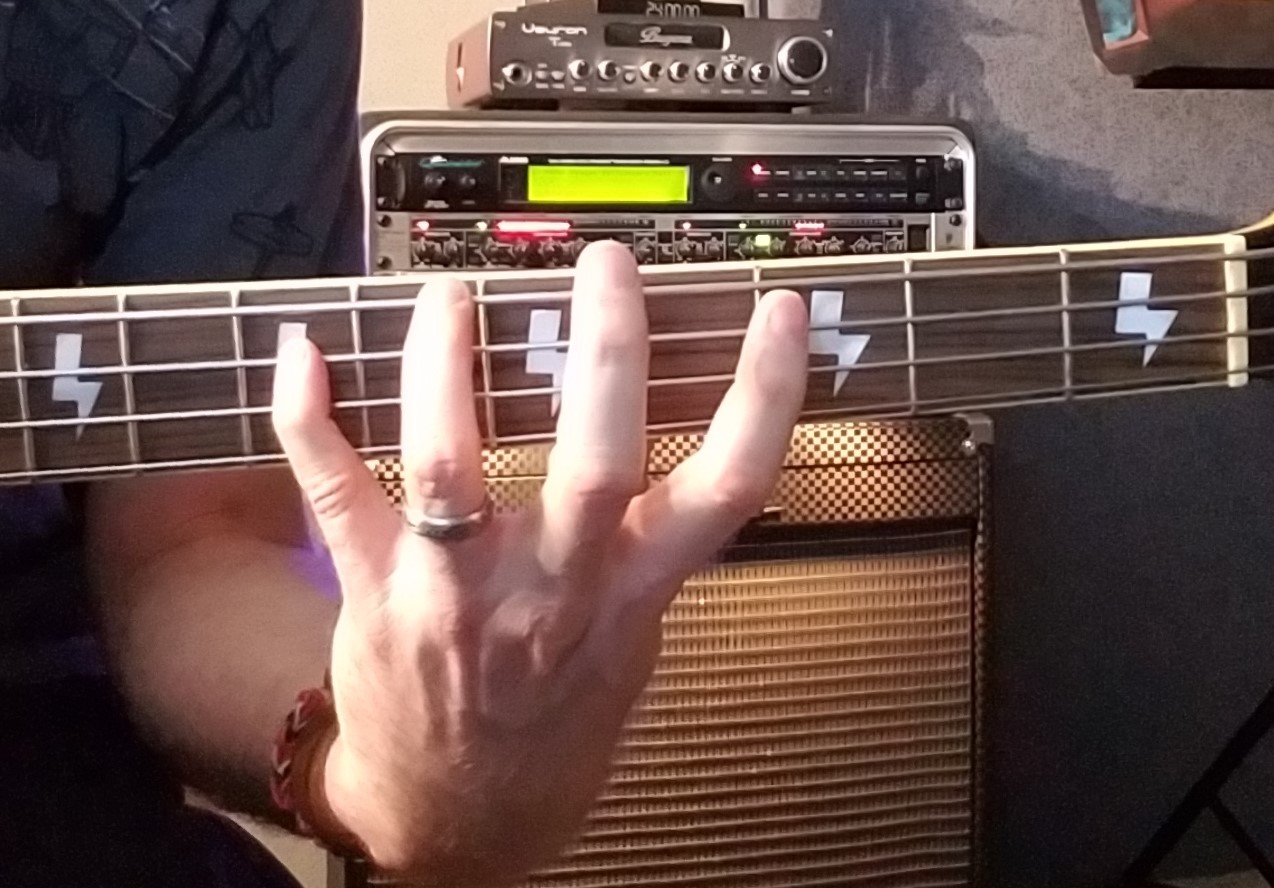

Indeed, Celeste – if you’re just starting out you must gain from that first article, which you can READ HERE.
It gives you the basics on roots & 5ths, which are used in just about every song on bass.
Let us know how you progress! We love to hear how we’re helping!! 😉
Hi Teaj,
This was a very helpful tutorial and video. I think I will have to go back and read your first article because I am really new at all of this, but the way you explained it made it much easier to understand. Thank you very much for sharing and hopefully after I have read your first article I will be able to come back to this one 🙂